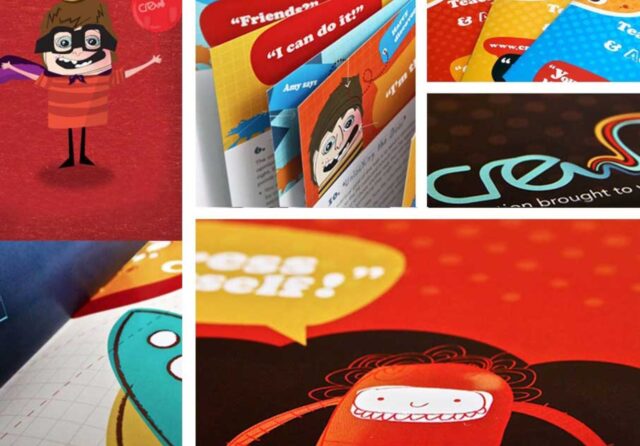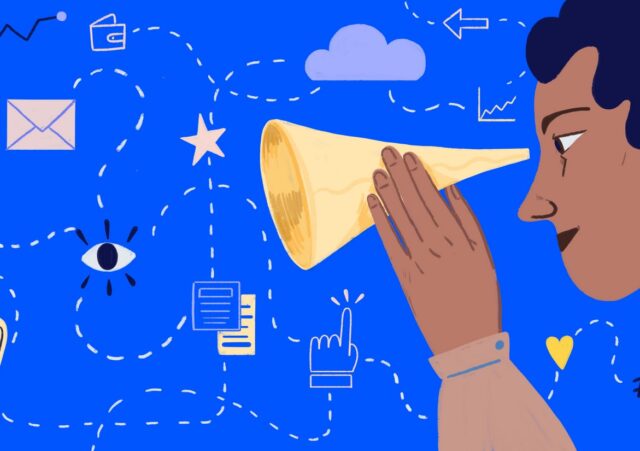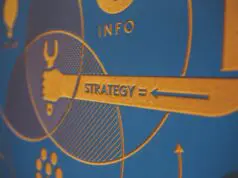
Obviously, the emergence of visual social networks has largely changed the nature of marketing, and if earlier textual information prevailed on the web, now Internet users prefer to consume text-graphic or graphic, and even video information. Visual marketing should become a priority in the activities of your company, but it must be admitted that many on this path are stopped by ignorance of the intricacies of working with visual platforms and additional costs. The belief that high-quality visual content can only be created with a large budget, incredible artistic talent and skills in working in the Photoshop editor is in fact false, and moreover, it prevents you from making any progress in this direction.
Images, graphs and tables are a great way to keep your readers engaged. Advertising illustrations can be used to visualize campaigns, adding artistic distinction, and style to adverts. The ability to create high-quality visual information is now just as important as the ability to write clear and engaging text as people following directions with text and illustrations do 323% better than people following directions without illustrations.
To help you keep pace with these trends, let’s take a look at how visual content can impact your marketing.

Use Illustrations to Increase Interest
Illustrations will resonate with your audience far more emotionally than charts or lists. Data by itself has no value: it is only important in the context of real life, and it is best conveyed not by a graph or diagram, but by history. To tell a story, you need photos. They allow you to draw people into your world and create and strengthen emotional connections. Do not forget to make the image full-screen, slightly outside the slide – this way you will achieve much more effect than small pictures.

Build Trust
Do you want your landing page to be associated with a real business? Then do not place faceless, already familiar stock photos on it. The Internet is inherently depersonalized, which hinders trusting relationships. Show the face of your company to build trust. So post photos of real employees on your landing page rather than smiling mannequins, or put in enough effort to find non-standard images.

Guide Customers with Visual Content
Visual information is processed by our brains 60,000 times faster than text. Images at the top of a post work especially well as they have a direct impact on the reader and open the door to the rest of the content.
Besides, a carefully chosen image can add new flavor to the content of your message. Therefore, avoid overly staged, flawless photos that are characteristic only of professional models, and try to find images that show ordinary people in real situations, because it is such content that is most credible.
In short, avoid the obvious by using more subtle approaches. What if the entire page is made up of images? Developing the topic of visual content, it should be noted that video is another interesting format for conveying information convincingly, and should not be neglected either.

Show how Customers Feel after Purchase
Have you ever bought a package or booked a hotel without looking at the pictures? Unlikely. And all travel agencies know this well. Therefore, their sites are full of photographs of beautiful landscapes, luxury hotels, tanned bodies and other temptations. Here one photo convinces better than 1000 words.
We think we are making decisions based solely on reason. However, in fact, the first and last word remains with emotions. But having made a decision, we already justify it with the help of reason. Therefore, try to convey positive feelings in images, awaken the imaginations of potential customers, aim for emotions, not mind. Sell not a product, but a product experience.

Use Graphic Content to Show Contrast
More than half of the human brain is involved in processing visual information – as you can see, the power of images is great, so the full potential of visual content should be directed to enhancing the impact of your pre-and post-click marketing tools.
Each of us is surrounded by a text content with no time to consume it. Fortunately, visual information is processed separately from verbal information. Therefore, viewing photos is a kind of rest for the brain, tired of the abundance of text, and correctly selected images only emphasize short and successful slogans, having a greater impact on the target group.
Photos, drawings and infographics help readers to perceive information “at a glance”. Vivid and clear images are great for showing the difference between two things or showing what came before and what came after.

Use the Full Potential of Images
We live in an amazing time, when everyone can get new knowledge via the Internet, quickly and for free. There are many open source tools and resources on the web that were unthinkable just 10 years ago.
Use signposts to draw attention to the most important sections of the page. Typically, these are headers, buttons, and lead forms. However, here the choice is yours, since the main trump card of your landing page may be, for example, a review.

Use GIFs
Do you understand what kind of infographics will become popular? Take it to the next level – add animation. This can increase audience engagement, encourage content sharing, and increase traffic. Gifographics are as similar to infographics as possible. The only difference is that the picture is animated. You can use GIF not only on your own resources, but also on social networks. Besides, Buffer conducted a study which revealed that posts with animated graphics are shared more than posts without them.
When it comes to marketing, graphic design is a crucial part of your overall content strategy. No matter how good the text is, no one will notice it unless it is accompanied by pleasing visuals to grab people’s attention while browsing. Visual graphics are an essential part of any marketing plan, and a designer’s contribution to the success of a marketing strategy cannot be overstated. So, you must consider your company’s marketing goals and tone when creating any visuals for social media. And don’t forget the main rule of effective marketing- never stop experimenting.









